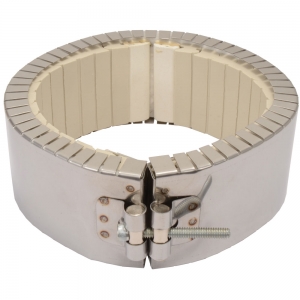Flasks are among the most fundamental tools in any laboratory, whether it's for academic research, pharmaceutical testing, chemical analysis, or quality control. Flasks come in a wide variety of shapes, sizes, and specifications; each is designed for a specific function. Selecting the right flask is not just a matter of convenience; it plays a direct role in the accuracy, safety, and success of experimental outcomes.
In everyday laboratory operations, general-purpose flasks, such as conical or round-bottom flasks, serve well for mixing, heating, or holding solutions. However, in high-precision analytical workflows, regulated pharmaceutical environments, or critical titration processes, the use of specialised flasks becomes essential. Using an inappropriate or non-calibrated flask in such cases may compromise data integrity, regulatory compliance, or process reproducibility.
Types of Laboratory flasks:
For different purposes and experiments, various types of flasks are used in the laboratory. The most common ones include the round-bottom flask, volumetric flask, flat-bottom flask, conical flask, and flask for glass wash bottles.
Below is a detailed table discussing the significant features of all types of laboratory flasks:
|
Flask type |
Shape |
Usage |
Materials |
Volume range |
|
Conical (Erlenmeyer) |
Sloped sides, narrow neck |
Titrations, shaking cultures, and minimal splash |
3.3 Low-expansion Borosilicate glass |
25 ml to 500 ml |
|
Round Bottom |
Narrow neck with a round bottom |
Reflux, boiling, distillation |
3.3 Low-expansion Borosilicate glass |
50 ml to 20,000 ml |
|
Flat Bottom |
Narrow neck with broad base |
Sample holding, iodometric analysis |
3.3 Low-expansion Borosilicate glass |
25 ml to 20,000 ml |
|
Volumetric |
Single graduation, narrow neck |
Accurate solution prep at set temperatures (20/27°C) |
3.3 Low-expansion Borosilicate glass |
1 ml to 2000 ml |
|
Flask for Glass Wash Bottles |
Single graduation, narrow neck with flat bottom |
Redox titrations involving iodine chemistry |
3.3 Low expansion Borosilicate glass |
250 ml to 1000 ml |
Factors influencing the selection of laboratory flasks:
- Function: What task the flask is meant to perform. Mixing, measuring, storing, or heating.
- Calibration: Whether the volume markings are certified and accurate to a specific tolerance.
- Chemical Compatibility: The materials used in the flask must be compatible with the reagents or solutions being handled.
- Workflow Integration: The flask must be compatible with other apparatus, such as condensers, stirrers, or heating mantles, and integrate seamlessly into broader lab processes.
Material Consideration
In lab environments that use strong acids, organics, or demand high-temperature sterilisation, glass flasks are the industry standard because of the following factors,
- No leaching: Borosilicate glass doesn’t introduce impurities.
- High thermal resistance: Can be autoclaved or heated uniformly.
- Calibrated for precision: Especially important in Class A volumetric flasks.
For batch-critical processes, such as volumetric solution preparation, filtration, or iodometric flask titration, glass is the only suitable option. Prominent brands like Borosil Scientific offer a vast range of properly calibrated flasks, made of 3.3 borosilicate glass, to ensure safe laboratory practices.
Maintenance and Handling Protocols
Even the most precisely manufactured laboratory flasks will fail to deliver accurate performance if they are mishandled, poorly cleaned, or scratched. Maintenance is not optional in regulated laboratories; it is part of compliance. Standard protocols for handling laboratory flasks include:
- Use neutral pH detergents: Acidic or alkaline cleaners can etch calibration marks and damage glass surfaces.
- Soft brush cleaning only: Avoid abrasives, especially for Class A calibrated flasks.
- Air-dry inverted: Do not wipe with lint-based materials that may leave fibres behind.
- Inspect for chips: A minor crack at the neck compromises the entire reading; replace chipped units immediately.
- Avoid thermal shock: Do not transfer flasks directly from cold storage to hot baths. Use intermediate temperature stages.
Volumetric flasks used in pharmaceutical quality control (pharma QC), especially in potency assays or dissolution testing, must be verified periodically. When QR-coded, as in select Class A models, the traceability and re-verification processes are significantly simplified.
Effects of using the wrong flasks:
- Using a round-bottom flask for volumetric prep. Without calibration, this results in deviations in concentrations and affects test repeatability.
- Filtering kits used in place of glass assemblies often introduce organic leachables into filtered solvents, corrupting HPLC baselines.
- Coated amber flasks are used in photostability studies. The coating peels over time, compromising light protection and rendering stored samples invalid.
Professionals in analytical labs, especially those involved in stability testing, assay development, or impurity profiling, are advised to use clear or amber glassware that is certified and designed for their specific environment, preferably with embedded calibration traceability from premium providers like Borosil Scientific.
Conclusion
Laboratory flasks are not auxiliary tools; they are part of a precision process. You can avoid any type of error, whether it is incorrect data interpretation, calibration accuracy issues, or any kind of mishap, by choosing the correct flask for the experiment.
By understanding the specific properties of each flask type, volume tolerance, chemical compatibility, filtration setup, and design geometry, you make informed choices that support process reliability and regulatory readiness.






